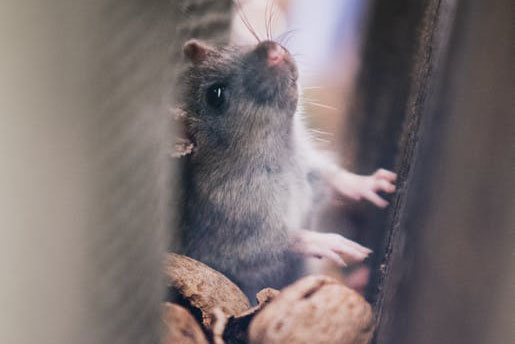The Difference Between Rats and Mice
The typical mouse can be anywhere from two to four inches in length, while an average rat’s size ranges anywhere from seven to nine inches in length. While it may seem easy to distinguish between the two given their opposite sizes, baby rats can look similar to full adult mice. Although the color of mice and rats are alike, there are a few differences in other features that would help you distinguish between the two. Starting with the noses of both mice and rats; mice will have more of a triangular nose whereas a rat’s nose is blunter. When it comes to ears, mice have large, floppy ears however rats have larger ears in size compared to mice but not in respect to their body size. Mice also tend to have long, thin tails with hair but rat tails will usually be hairless and scaly.
How to Get Them Out
Mice
Before mice can nest in your home, they need to find a way inside. Basements, attics, crawlspaces and cracks around windows and doors are all possible entry points. Do your best detective work to determine where the mice are living and building nests, and then set your traps around those general areas. Clear out areas in your home, especially your garage and set traps.
Rats
Same with mice, rats need to find a way into your home, so before the problem event exists, make sure you seal off any entry point for a rat in your home. A bait station containing rodenticide will kill rats, but not immediately because it uses their feeding habits against them. Since rats are wary of new foods, they might nibble a teeny bit of something new, then wait to see if it harms them. If they determine the new food is safe, they’ll gorge on it until they’re full, and other rats will follow suit. This behavior is why effective single-feed baits can often take a few days to work, because if they killed rats immediately, most would avoid them. These are different from baits in that they physically hold rodents in place. This is ideal if you want proof the rat was caught, or if the problem is in your attic where it’s harder to locate dead rats once they’ve eaten poisonous bait.
If you find yourself with Rats and Mice in your home call us today!


